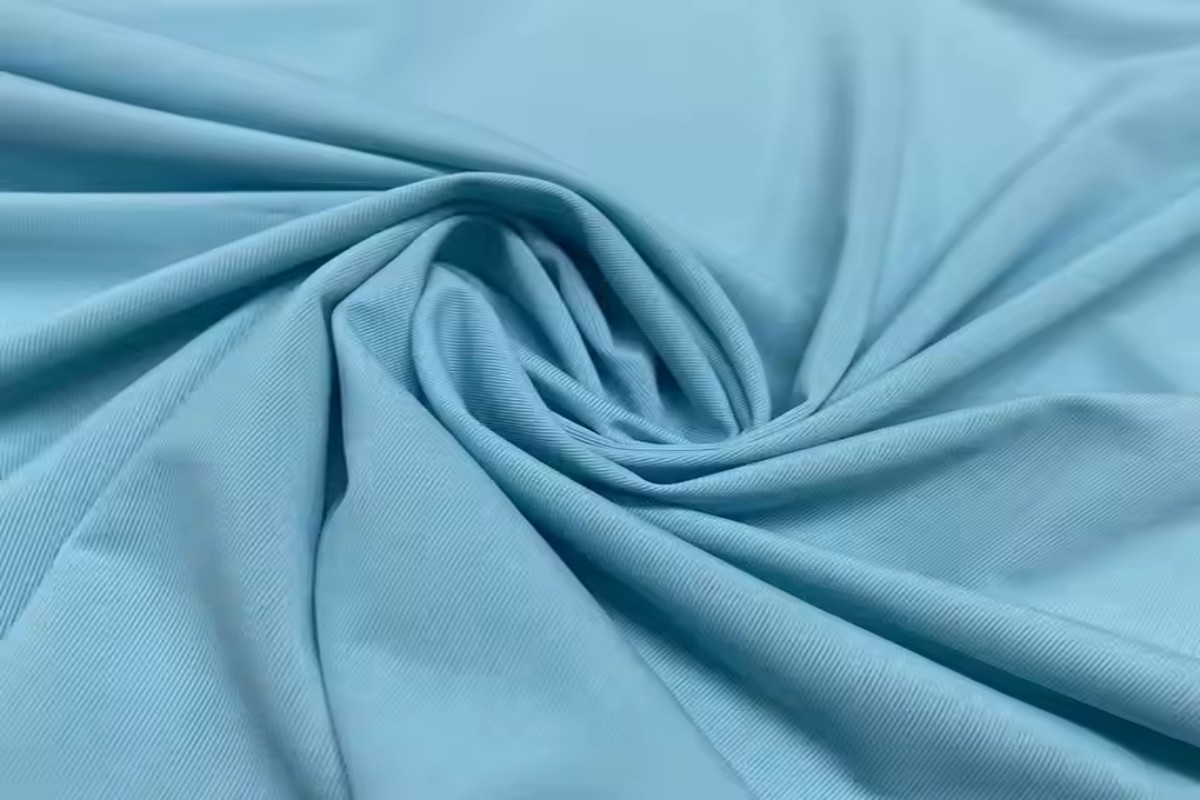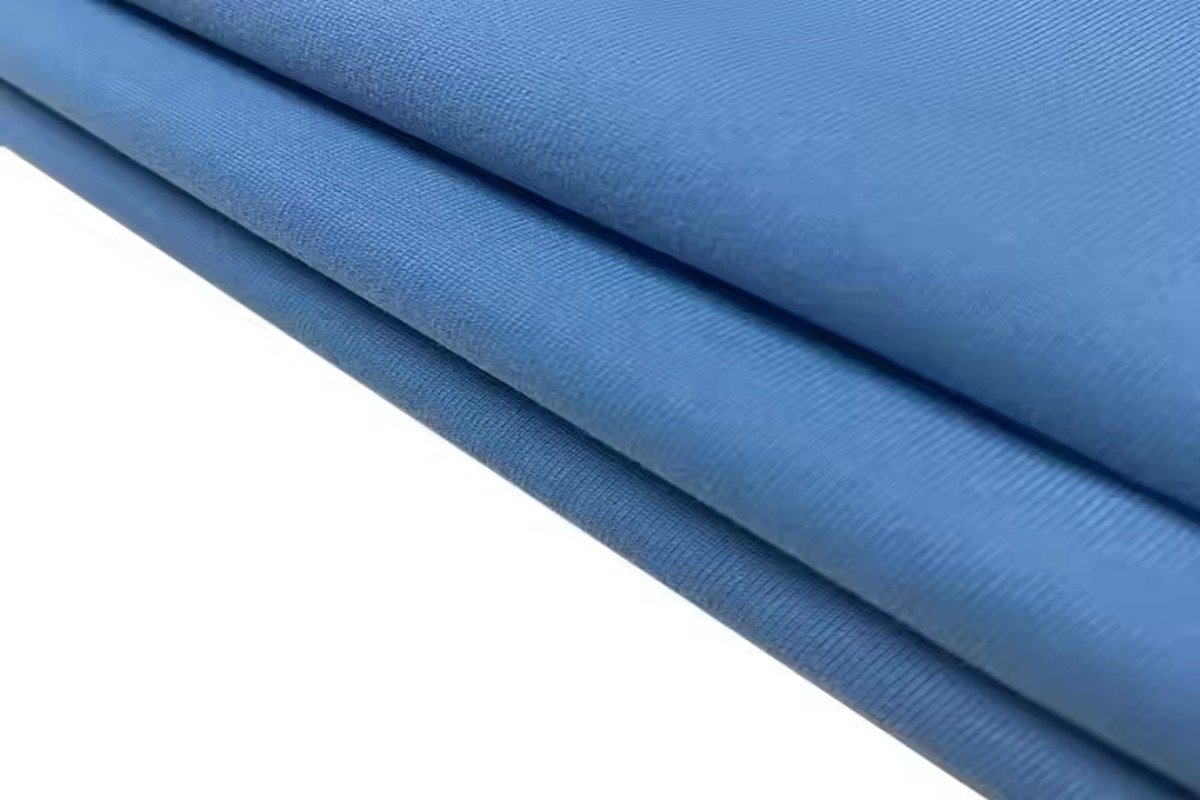I’ve always admired how nylon lycra blend fabric revolutionizes modern clothing. Its flexibility and durability make it a perfect choice for activewear, especially swimwear nylon spandex fabric. Despite some challenges, such as environmental concerns and care requirements, the versatility of materials like 4 way spandex nylon blend fabric and beachwear nylon spandex fabric continues to stand out in the fashion world.
Key Takeaways
- Nylon lycra fabric is stretchy and strong, great for sportswear.
- Take care of it by washing in cold water and air drying.
- Think about its effect on the environment; choose eco-friendly brands and recycle old clothes.
What is Nylon Lycra Blend Fabric?
Composition and Structure
I’ve always found the composition of nylon lycra blend fabric fascinating. This fabric combines two synthetic fibers: nylon and lycra (also known as spandex or elastane). Nylon provides strength and durability, while lycra contributes elasticity and stretch. Together, they create a material that is both resilient and flexible.
The structure of this blend is unique. Nylon forms the base, offering a smooth and lightweight texture. Lycra, woven or knitted into the nylon, adds stretchability in multiple directions. This combination results in a fabric that adapts to body movements effortlessly. Manufacturers often adjust the ratio of nylon to lycra depending on the intended use. For example, activewear may have a higher percentage of lycra for enhanced flexibility, while casual clothing might prioritize nylon for durability.
Key Features and Properties
The properties of nylon lycra blend fabric make it a standout choice in modern clothing. Its exceptional elasticity allows garments to retain their shape even after repeated use. I’ve noticed how this fabric resists wear and tear, making it ideal for high-performance apparel.
Another key feature is its moisture-wicking ability. It keeps the skin dry by drawing sweat away, which is why it’s so popular in sportswear. Additionally, the fabric feels lightweight and breathable, ensuring comfort during long hours of wear. Its smooth texture also reduces friction, preventing skin irritation.
However, the fabric’s sensitivity to heat requires careful handling. High temperatures can weaken its fibers, so I always recommend washing it in cold water and air drying. Despite this, its versatility and performance make it a staple in my wardrobe.
Pros of Nylon Lycra Blend Fabric
Exceptional Flexibility and Stretch
I’ve always appreciated how nylon lycra blend fabric adapts to body movements. Its elasticity allows garments to stretch without losing their original shape. This makes it ideal for activities requiring a full range of motion, like yoga or running. I’ve noticed that even after repeated use, the fabric maintains its flexibility.
The stretchability of this fabric ensures a snug yet comfortable fit, making it a favorite for activewear and swimwear.
This property also enhances the overall fit of clothing, ensuring it molds perfectly to the body. Whether it’s leggings or compression wear, the fabric delivers unmatched flexibility.
Long-Lasting Durability
Durability is another standout feature of nylon lycra blend fabric. I’ve observed how it resists wear and tear, even under demanding conditions. The nylon component provides strength, ensuring the fabric withstands frequent washing and extended use.
- It doesn’t easily lose its shape.
- It resists abrasions and minor damages.
This durability makes it a cost-effective choice for both manufacturers and consumers. I’ve found it particularly useful for garments that endure heavy use, like gym clothes or outdoor gear.
Moisture-Wicking and Breathable
One of my favorite features of nylon lycra blend fabric is its moisture-wicking ability. It keeps me dry during intense workouts by drawing sweat away from the skin. This property enhances comfort, especially in hot or humid conditions.
The fabric’s breathability also prevents overheating. I’ve worn it for hours without feeling sticky or uncomfortable. These qualities make it a go-to material for sportswear and summer clothing.
Lightweight and Comfortable for Daily Use
I’ve always admired how lightweight nylon lycra blend fabric feels. It doesn’t weigh down the body, even when layered. This makes it perfect for daily wear, from casual outfits to work attire.
The smooth texture of the fabric adds to its comfort, reducing friction and preventing skin irritation.
Its lightweight nature also makes it easy to pack for travel. Whether I’m heading to the gym or going on vacation, clothing made from this fabric is always a practical choice.
Cons of Nylon Lycra Blend Fabric
Environmental Challenges
I’ve noticed that nylon lycra blend fabric poses significant environmental challenges. Its synthetic composition makes it non-biodegradable, contributing to long-term waste in landfills. The production process also consumes large amounts of energy and water, releasing greenhouse gases into the atmosphere. Recycling this fabric is difficult due to the combination of nylon and lycra, which complicates separation.
While I appreciate its performance, I always consider its environmental impact when choosing clothing made from this material.
Sensitivity to Heat
Heat sensitivity is another drawback I’ve encountered with nylon lycra blend fabric. High temperatures can weaken its fibers, causing the material to lose elasticity and shape. I’ve learned to avoid using hot water or high heat settings when washing or drying these garments. Even ironing requires caution, as direct heat can damage the fabric.
Risk of Pilling and Bubbling
Pilling and bubbling often occur with frequent use or improper care. I’ve seen this happen when the fabric rubs against rough surfaces or undergoes repeated friction. These small, unsightly balls of fiber can make clothing look worn out prematurely. Using a fabric shaver can help, but prevention is always better than repair.
Potential Skin Irritation for Sensitive Users
Some individuals, including myself, may experience skin irritation when wearing nylon lycra blend fabric. Its synthetic nature can cause discomfort, especially for those with sensitive skin. I recommend testing the fabric on a small area before prolonged use or opting for garments with a higher percentage of natural fibers.
Applications in Modern Clothing
Activewear and Sportswear
I’ve always found nylon lycra blend fabric to be a game-changer in activewear and sportswear. Its flexibility and moisture-wicking properties make it ideal for activities like running, yoga, and cycling. The fabric’s ability to stretch in multiple directions ensures a full range of motion, which is essential for high-performance workouts. I’ve noticed that it also provides a snug fit, enhancing muscle support and reducing fatigue during exercise.
Many athletes prefer this fabric for its durability and ability to withstand intense physical activity.
From leggings to compression tops, nylon lycra blend fabric dominates the activewear market for good reason.
Casual and Everyday Clothing
This fabric isn’t just for the gym. I’ve seen it incorporated into casual clothing like t-shirts, dresses, and even jeans. Its lightweight nature and comfort make it perfect for daily wear. I particularly enjoy how it adapts to body movements, ensuring all-day ease. The smooth texture also adds a polished look, making casual outfits appear more refined.
Swimwear and Intimate Apparel
Swimwear and intimate apparel benefit greatly from this fabric’s unique properties. I’ve noticed how its elasticity ensures a secure fit, which is crucial for swimwear. It resists chlorine and saltwater damage, maintaining its shape and color over time. For intimate apparel, the fabric offers a soft, second-skin feel that enhances comfort without compromising support.
High-Performance and Specialized Garments
In specialized garments like medical compression wear or costumes for performers, nylon lycra blend fabric shines. Its ability to combine stretch, durability, and breathability makes it indispensable. I’ve seen it used in wetsuits, dancewear, and even astronaut suits, proving its versatility in demanding applications.
Care and Maintenance of Nylon Lycra Blend Fabric
Proper Washing and Drying Techniques
I’ve learned that washing nylon lycra blend fabric requires special care to maintain its quality. I always use cold water and a gentle detergent to prevent damage to the fibers. Hand washing works best, but when I use a washing machine, I select the delicate cycle. Placing garments in a mesh laundry bag minimizes friction and reduces the risk of pilling.
Drying this fabric also demands attention. I avoid tumble dryers because high heat can weaken the material. Instead, I lay the clothing flat on a clean surface or hang it in a shaded area to air dry. This method preserves the elasticity and prevents shrinkage.
Preventing Heat Damage
Heat is the biggest enemy of nylon lycra blend fabric. I never use hot water for washing or high settings on dryers. When ironing is necessary, I set the iron to the lowest temperature and use a pressing cloth to protect the fabric. Direct heat can cause irreversible damage, so I always handle it with caution.
Tip: Avoid leaving garments in direct sunlight for extended periods, as UV rays can degrade the fibers over time.
Storing Nylon Lycra Blend Clothing Correctly
Proper storage extends the lifespan of nylon lycra blend fabric. I fold these garments neatly instead of hanging them, as prolonged stretching can distort their shape. For long-term storage, I use breathable fabric bags to protect them from dust and moisture. Keeping them in a cool, dry place prevents mildew and maintains their integrity.
Environmental Impact and Sustainability
Recycling Challenges for Nylon Lycra Blend
I’ve noticed that recycling nylon lycra blend fabric presents significant challenges. The combination of nylon and lycra makes it difficult to separate the two materials during the recycling process. This complexity often results in the fabric being discarded rather than repurposed. Additionally, the synthetic nature of both fibers means they are non-biodegradable, contributing to long-term waste in landfills.
Recycling facilities often lack the technology to handle blended fabrics effectively. This limitation increases the environmental footprint of nylon lycra blend fabric.
I’ve found that some manufacturers are exploring chemical recycling methods. However, these processes remain costly and energy-intensive, limiting their widespread adoption.
Innovations in Eco-Friendly Alternatives
The fashion industry has started to address these challenges by developing eco-friendly alternatives. I’ve seen brands experimenting with bio-based elastane and recycled nylon. These materials aim to reduce reliance on virgin synthetic fibers. For example, some companies now use recycled fishing nets to produce nylon, which helps minimize ocean waste.
Another promising innovation involves biodegradable spandex. Although still in its early stages, this material could significantly reduce the environmental impact of stretch fabrics. I believe these advancements show great potential for creating more sustainable clothing options.
Practical Tips for Reducing Environmental Footprint
As a consumer, I’ve adopted several practices to minimize my environmental impact. I prioritize buying high-quality garments made from nylon lycra blend fabric to ensure they last longer. Proper care, such as washing in cold water and air drying, also extends the lifespan of these clothes.
Donating or repurposing old clothing helps reduce waste. I’ve turned worn-out leggings into cleaning rags or craft materials.
Supporting brands that use recycled or sustainable materials is another effective way to promote eco-friendly practices.
Nylon lycra blend fabric offers a unique combination of flexibility, durability, and comfort, making it a staple in modern clothing. Its versatility spans activewear, swimwear, and casual attire. However, I always weigh its benefits against its environmental challenges. Choosing sustainable options and proper care can help balance performance with responsibility.
FAQ
What makes nylon lycra blend fabric ideal for activewear?
The fabric’s stretchability, moisture-wicking properties, and durability make it perfect for activewear. It adapts to movements, keeps skin dry, and withstands rigorous use.
How can I prevent pilling on nylon lycra blend clothing?
I always wash these garments inside out using a gentle cycle. Avoiding rough surfaces and storing them properly also helps reduce pilling.
Is nylon lycra blend fabric suitable for sensitive skin?
It depends. Some people with sensitive skin may experience irritation. I recommend testing the fabric on a small area before wearing it for extended periods.
Post time: Mar-27-2025




